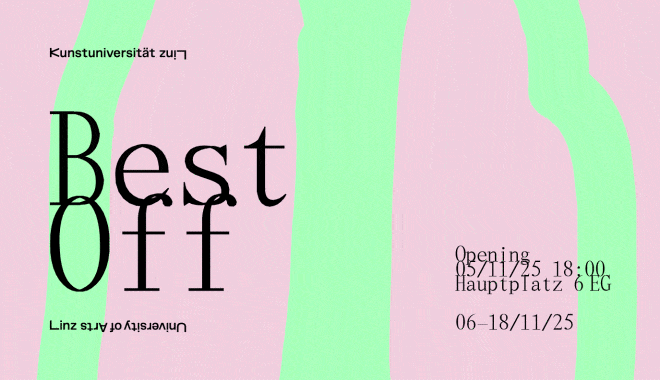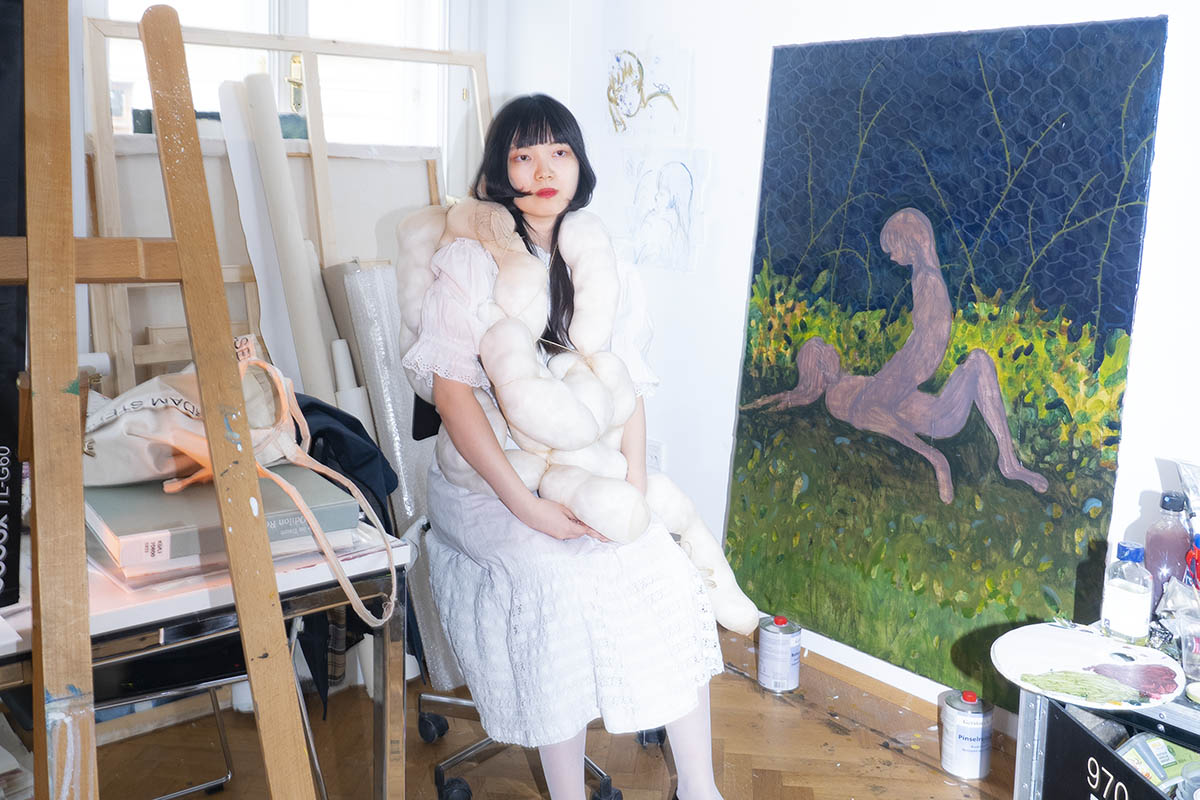
Can you tell us about your background?
I grew up in a suburban area in South Osaka and was raised by a single mother. Since my mother was busy with work, I mostly spent my time alone drawing. I even don’t remember when I started drawing, but it has been something very natural to do and has given me a tolerance for solitude. It would be a lie if I said that my time alone as a child was not lonely at all, but that time has certainly made me grow stronger. It was a gift. When I was a teenager, I thought of becoming a graphic designer. I have an intense love for music and am interested in making album covers. So I started studying graphic design at Central Saint Martins in London a few years after I graduated high school. However, I was not happy with what I was doing there. I was uncomfortable with making something that had to fit the client’s needs, and there was not enough space for me to express myself through art. Also, the tuition was not affordable at all, so I ended up dropping out after 2 years. I went back to Japan afterward, but I still had a wish to study fine art somewhere in Europe. I liked being in Europe and already had a feeling that I wouldn’t fit into the art education in Japan. So I did a lot of research on European art universities, then randomly discovered the class I’m currently studying at die Angewandte. In 2020, I came to Vienna to take the entrance exam and got accepted. But right after the exam, the pandemic happened, so I postponed my studies for one semester. Finally, in 2021, I moved to the city and started studying at the university.
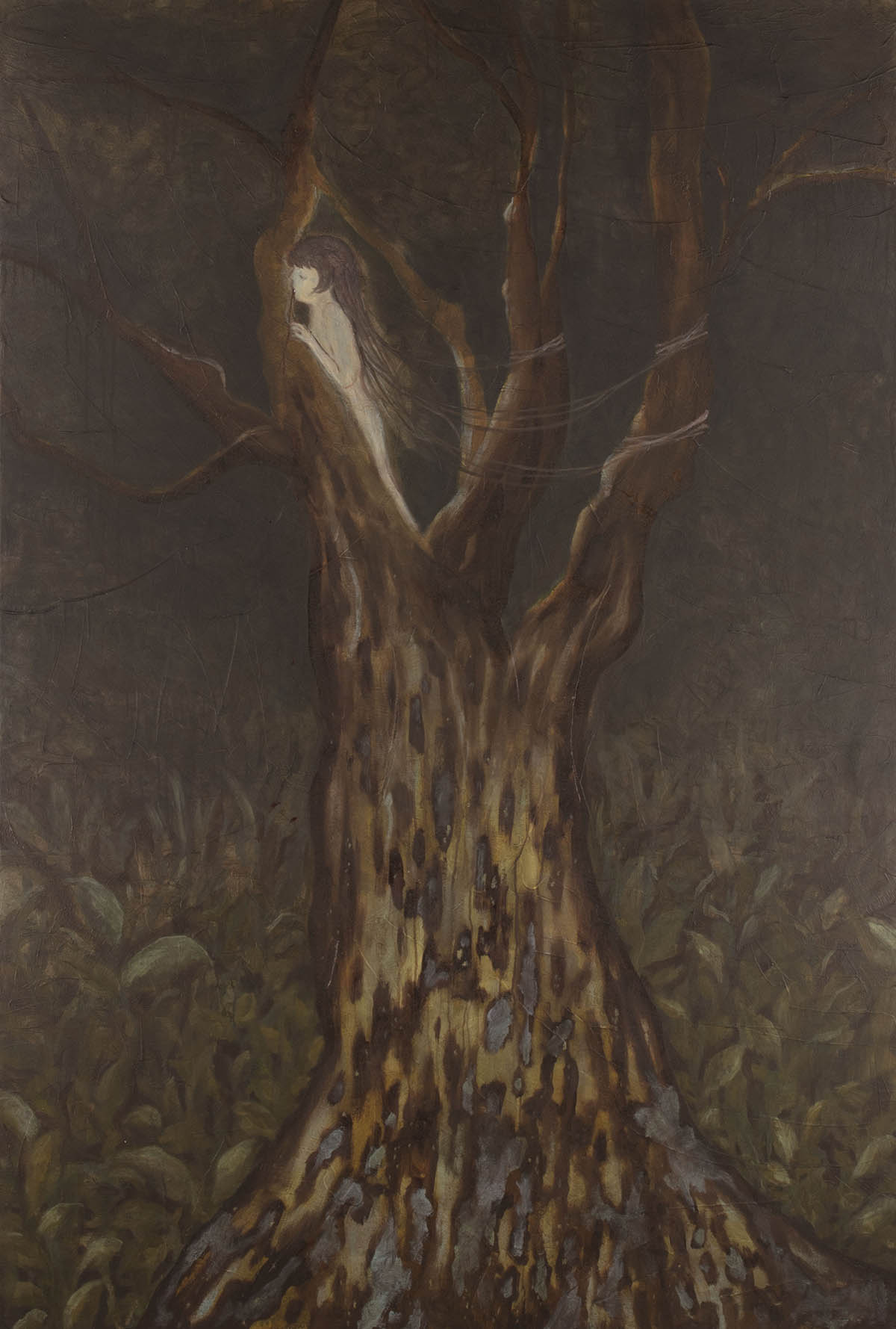
Are there specific themes or motifs that inspire you?
Most of my works are related to the theme of „pain.“ I always wondered why life is this extra painful and wanted to escape from it. I wished I was a doll, an automata, or a mineral, whatever non-human without life. But at one point, I read „The Flowers of Evil“ by Charles Baudelaire and he said, „The pain is the one nobility.“ This sentence was shocking to me, and I decided to carry the pain with me rather than evacuate from it if it makes me noble enough. And what inspires me is anything non-human and the stories about them.
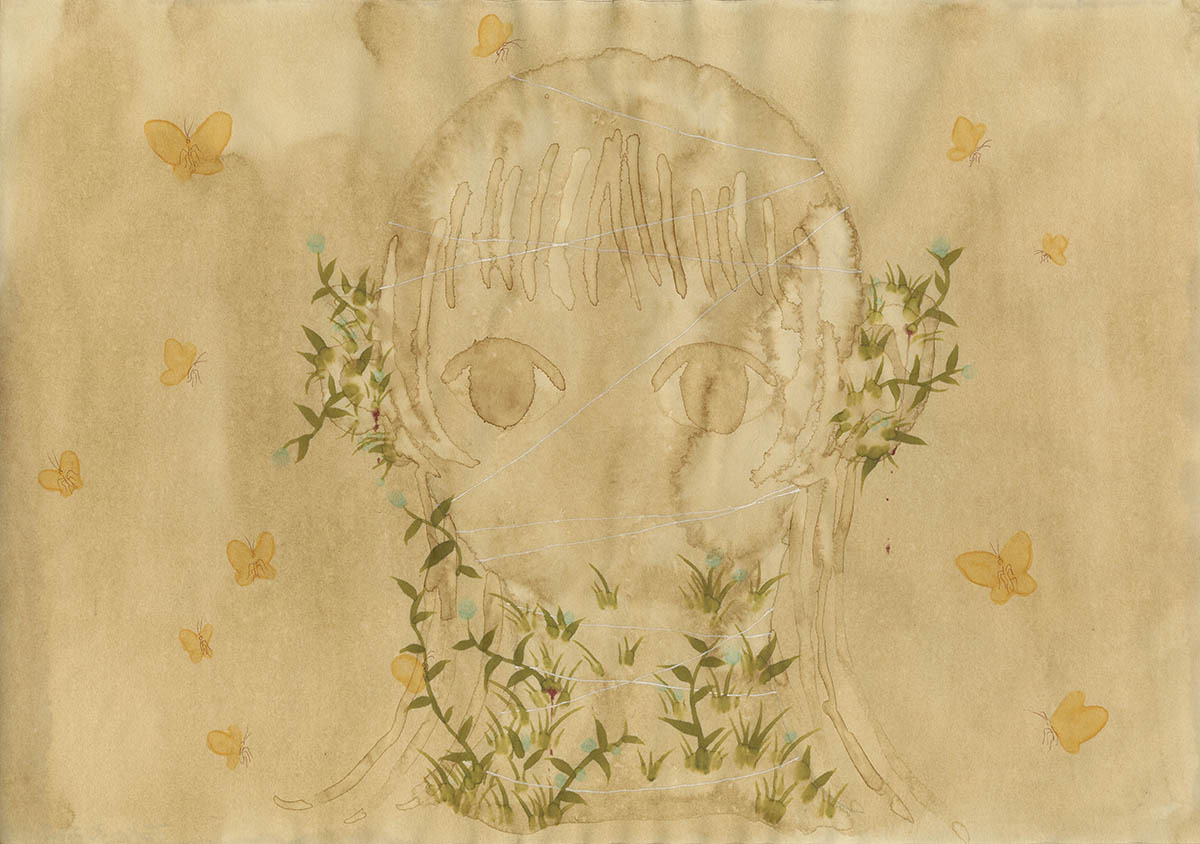
On Instagram, your username is i_eat_ohoshisama. What’s the story behind it?
Ohoshisama means „stars“ in Japanese, so my username means „I eat stars“. There’s a book called „One Thousand and One Second Stories“ by a Japanese author named Taruho Inagaki, whom I adore so much and who has been influencing me a lot. The book contains 70 short stories, and they are all extremely surrealistic, phantasmagoric, and also astronomical since the author had such admiration for astronomy. And my absolute favorite is the one called „On Eating a Star.“ In this story, the protagonist randomly picks up something white and put it in his mouth, then he describes how „it felt pleasantly cool and tasted like calcium.“ Then this calcium-flavored thing popped out of his mouth all of a sudden and vanished like a comet. It’s such a short story that has only 2–3 lines, but it’s very charming and has something special, like magic. When I look up at the stars at night, I still think, „Yeah, they must taste like calcium, because Taruho said so.“
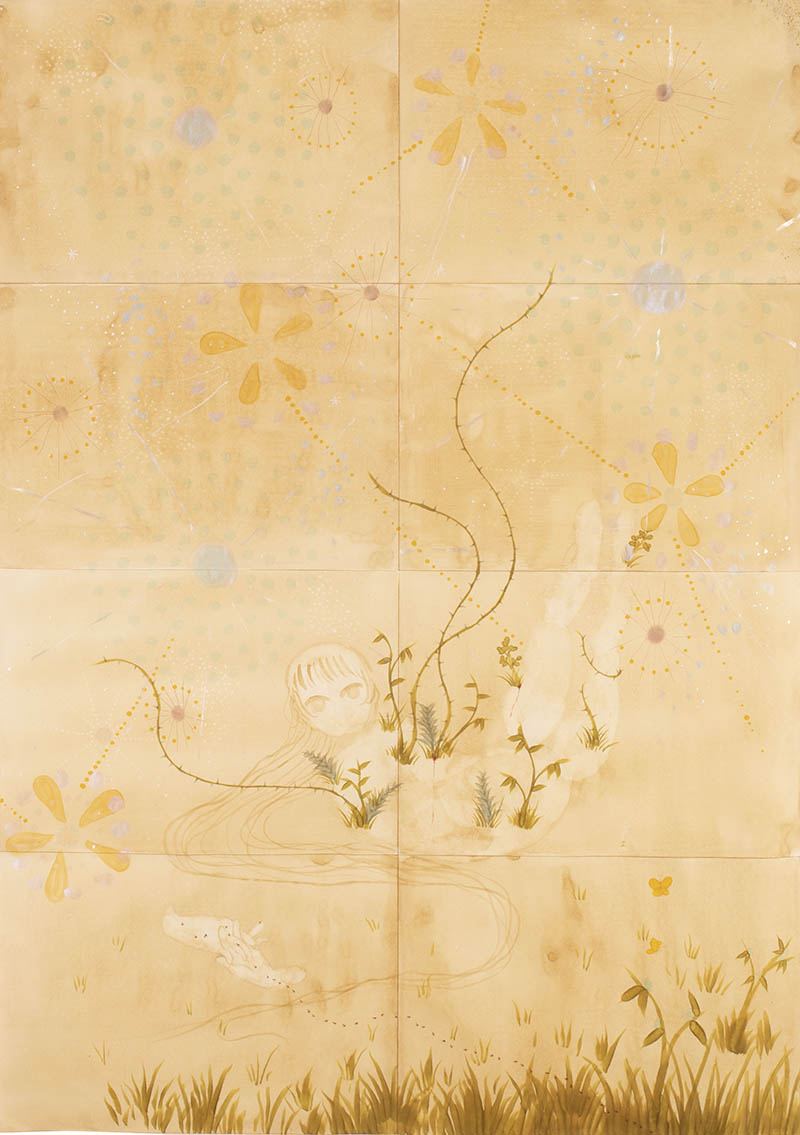
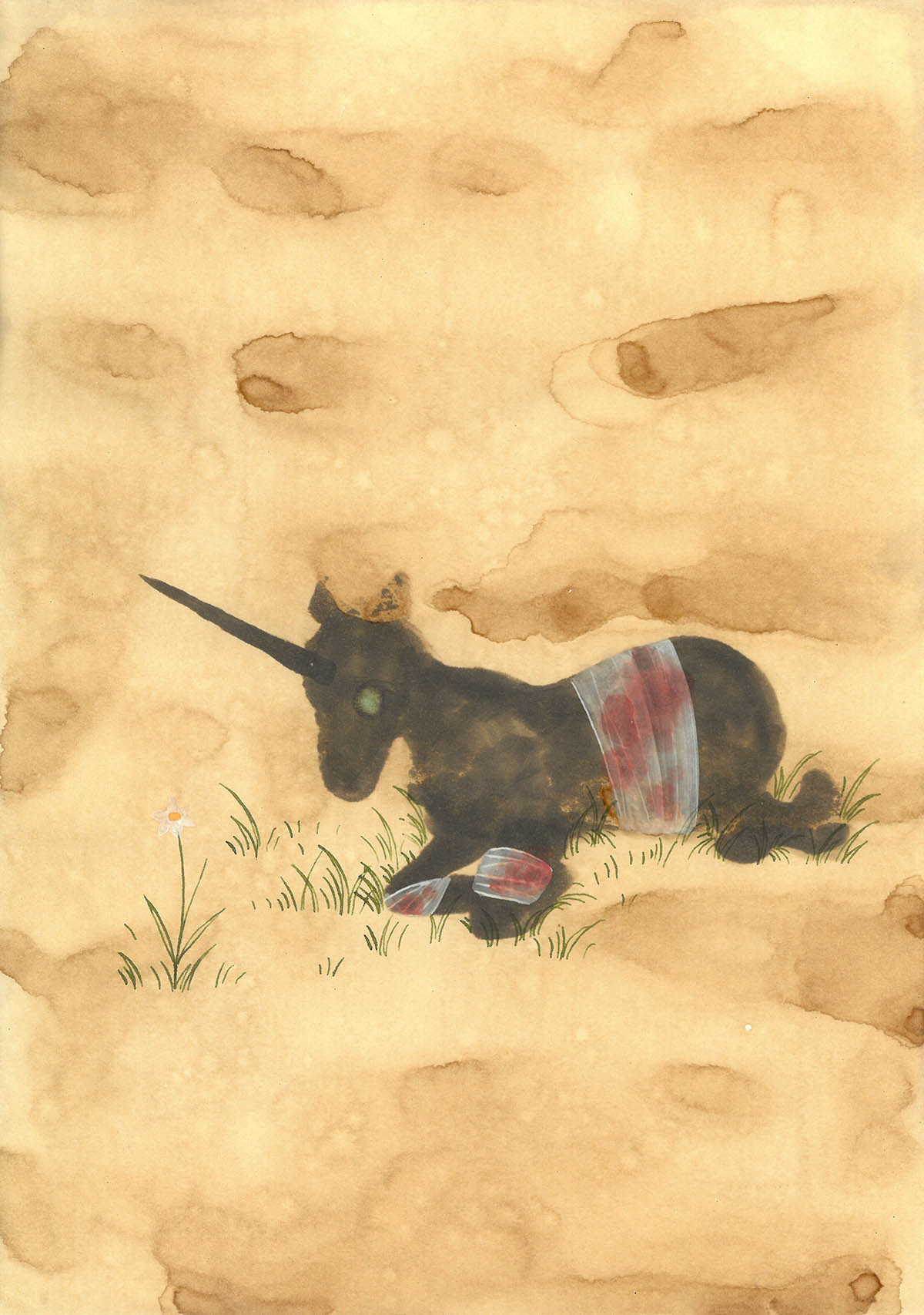
Your work „When You Grow Up“ was exhibited in the course of the Angewandte Festival 2023. Can you tell us more about your new works?
Thank you for keeping an eye on my work at the Angewandte Festival 2023. All of my work is very personal, so they are all special to me, but I have a strong emotional connection, especially to „When You Grow Up.“ Early this year, there was a phase when I couldn’t work at all because my private life was messed up a bit and I was losing my daily life. This experience made me realize that my everyday existence is the material for my work, rather than pencils or paints, and I draw with it. Every day is not always peaceful. But when I like and dislike someone, when I see the green shining and fluttering, when I realize how pretty the cigarette fire is in total darkness, I can’t stop feeling like „I want to turn this into a painting now.“ This feeling is a spark that I cherish. Regarding my figures, I know that they look like a girl, but I don’t specify their sex and gender. Or I’d rather say that I don’t want to give them any of those things, or even make them „human“. They are just a part of the landscape they are in, and they are aware of that. They also know that they will return to the soil one day and everything is temporary. And where they are is neither paradise nor hell, it’s just an ordinary landscape that everyone has seen somewhere sometime, no matter if it’s real or a dream. I’m not interested in depicting anything fancy or extraordinary, because ordinary things speak to me the most and have beauty. I think it’s funny that I consciously exclude humans from my paintings, although my works are all based on my everyday life as a human being. But this paradox is something very personal and makes my work strong and ephemeral.
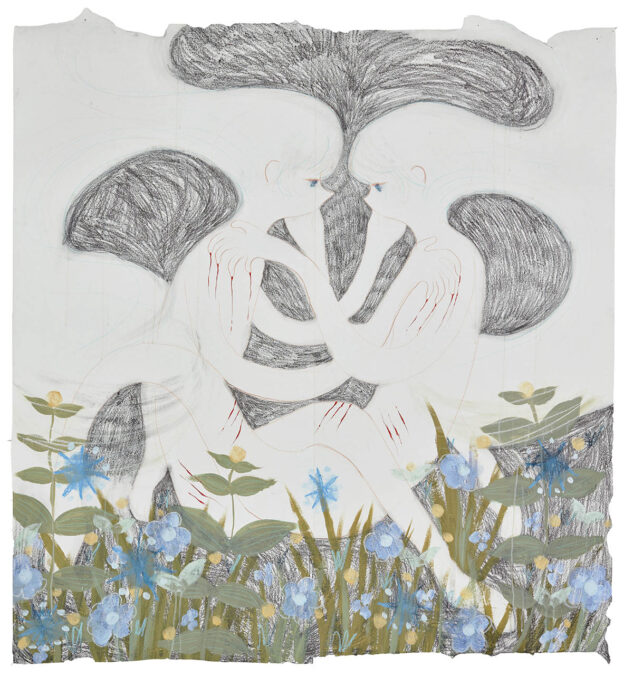
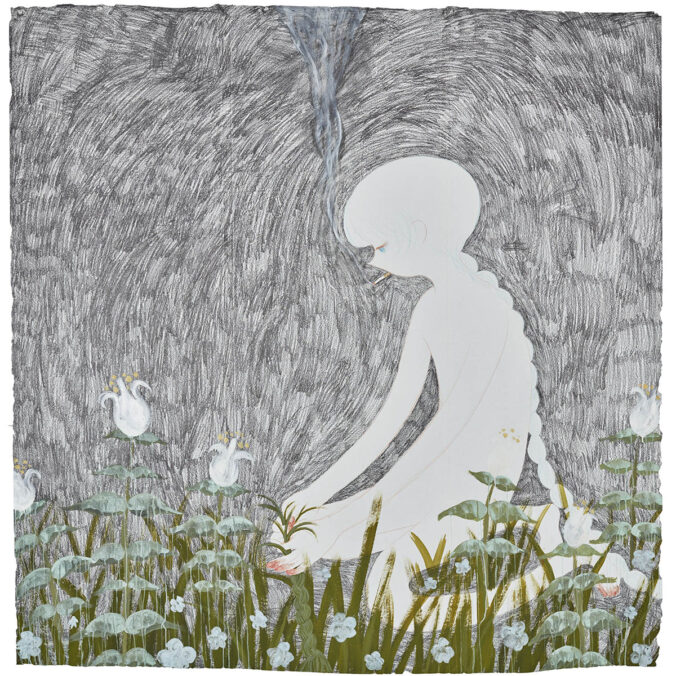
What influence does the format have on your artwork? How do you determine the size of your paintings?
Talking about the choice of scale, I don’t determine the size of the paintings, my paintings do. People often say that art is about making decisions, and I agree with that. It’s true that there are a lot of moments that ask us to make decisions in the process of creation. However, when I’m painting or just standing in front of my unfinished paintings, I always feel that the idea of controlling is very stupid and impudent. What we, or I as a painter, can do is just be witnesses to how the paintings are transforming by themselves and bless their metamorphosis. The format has a big impact on how I interact with my work. Before I started working on a large scale, I normally worked on a small scale. Small works require me to have a very intimate dialogue, which is like whispering in silence, and I’m always the one who travels into the images. On the other hand, I interact with big works almost like fighting, it involves my body much more as well as my mind. And they dive into myself, and viewers too.
How do you like to spend your free time? Do you have a favorite hobby?
How to define „free time“ is quite difficult for me since I think about my work almost 24/7, except when I’m sleeping. But spending time with people I like is one of the few moments when I can empty my head and just have fun with them. And I really like it. My favorite hobby is collecting. My flat is occupied with small things that I’ve been collecting, such as antique dolls, minerals, preserved insects, unicorns, and Sylvanian Families. They all have meanings and reasons why they are at my place, although they might all look like useless objects to others. I hunted most of them at flea markets, so going to flea markets is sort of my weekend routine. I also got some beads recently and already made a necklace for my stuffed toy dragon. Hopefully, it will be my new hobby, and I will make something for humans as well.
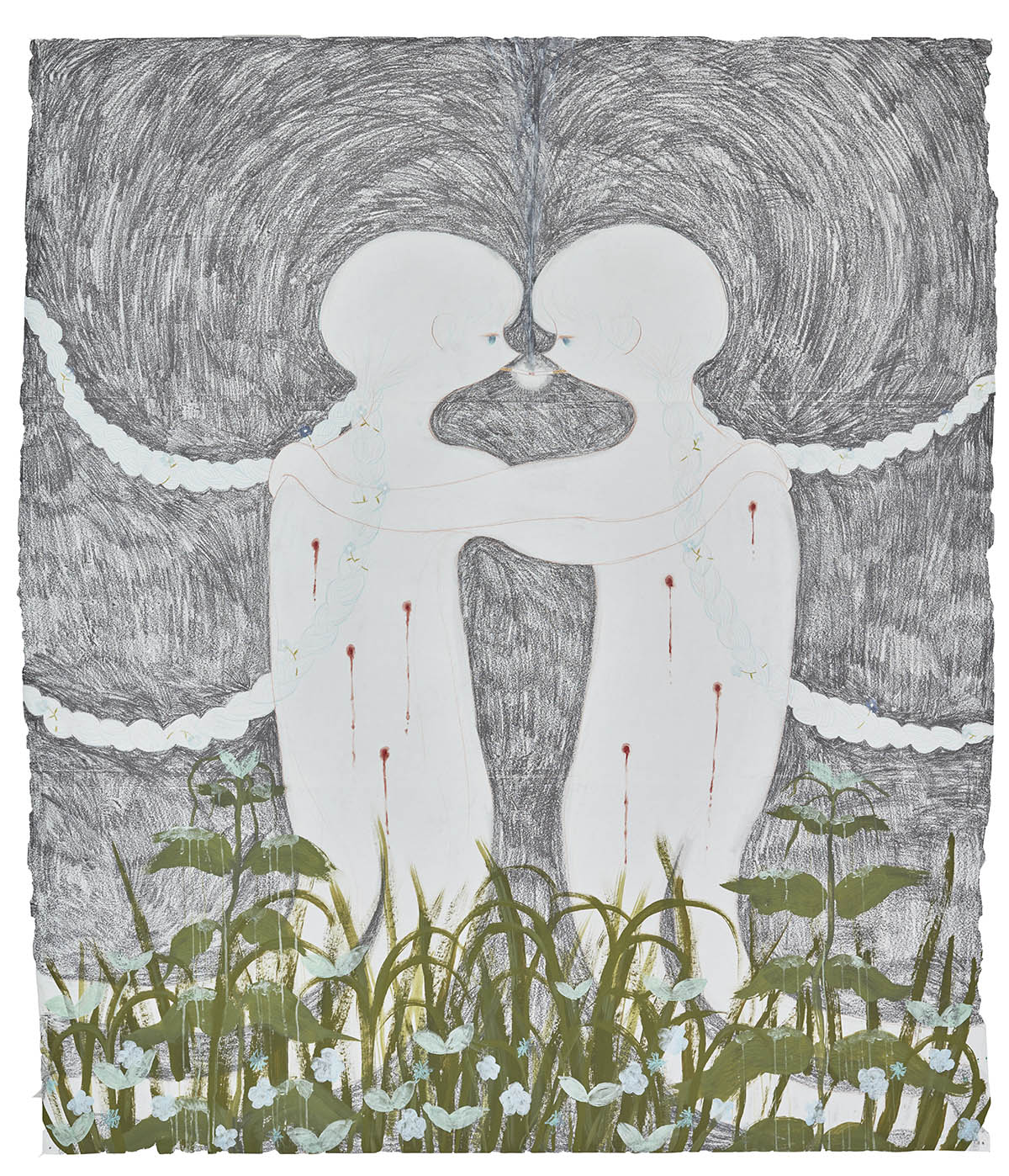
How do you spend the summer? What are your plans for 2023?
Summer is always my favorite season since I was a child, even though I’m not capable of hot weather. I’m not really a holiday/vacation lover. So my lifestyle stays quite the same as usual during the summer, I spend most of my time painting in the studio, or thinking and gathering ideas for new works at home. The only difference is that I can have an ice cream break in between. But this summer, I’m going back to Japan for the first time since I moved to Vienna in 2021. I’m staying there for a month, so hopefully there will be enough time to see people I’ve been missing. Also, I’m planning to do some research on Nihonga (Japanese traditional painting) and buy materials for new works. One more thing I’m very excited about is watching the newest Studio Ghibli film by Miyazaki at the cinema in Japan!
Fuko Katsuda – www.instagram.com/i_eat_ohoshisama/



